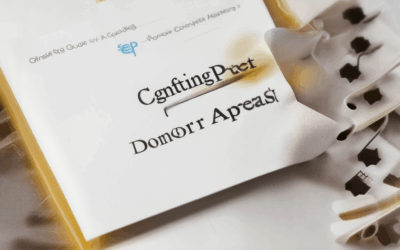Effective media relations are pivotal for nonprofit organizations aiming to build trust, foster visibility, and establish credibility within their communities. As the landscape of media continues to evolve, nonprofits must adapt strategies to navigate the complexities of public perception. Whether it’s securing coverage for a critical campaign or managing relationships with journalists, media relations play a transformative role in shaping how the world views your organization. This guide delves into actionable tips, real-world examples, and strategies tailored to help nonprofits thrive in the realm of media relations, ensuring your voice is heard and your mission is understood.
Key Takeaways
– Safeguard and Enhance Reputation: Media relations are crucial for nonprofits to maintain a positive public image, ensuring consistent messaging and transparent communication to diverse audiences.
– Strengthen Stakeholder Engagement: Build lasting relationships with donors, volunteers, and the public through strategic press releases, interviews, and content distribution, ensuring cohesive messaging across all platforms.
– Crisis Communication Preparedness: Proactively manage crises with clear, honest, and timely communication, collaborating with media to maintain trust and minimize negative impacts on your nonprofit’s reputation.
– Compelling Storytelling and Brand Loyalty: Craft narratives that align with your mission, inspiring emotional connections and driving supporter advocacy and brand loyalty.
– Advocacy and Public Influence: Use media relations to advocate for your cause, influencing public opinion and contributing to meaningful social change through aligned messaging.
– Alignment with Mission and Goals: Tailor media strategies to reflect your nonprofit’s mission, ensuring external communications support your long-term objectives and contribute to overall success.
– Leverage Resources for Optimal Impact: Utilize comprehensive tools and strategies, such as compliance guidance and fundraising techniques, to enhance your media relations efforts and amplify your nonprofit’s reach.
By focusing on these key areas, nonprofits can effectively navigate media relations, fostering trust, visibility, and long-term success. Explore NPO Expert’s resources for further insights and actionable strategies to elevate your media outreach.

What Falls Under Media Relations?
Media relations refer to the strategic interactions between an organization and the media to ensure effective communication and public perception management. Here are the key components:
1. Communication Strategies
- Press Releases : Official statements distributed to announce news, products, or services.
- Press Conferences : Gatherings where the organization presents updates or announcements to the media.
2. Relationship Building
- Journalist Outreach : Establishing connections with reporters and media outlets.
- Spokesperson Training : Preparing representatives to deliver the organization’s message clearly and professionally.
3. Monitoring and Analysis
- Media Monitoring : Tracking media coverage to gauge public reception and adjust strategies accordingly.
- Crisis Management : Addressing negative publicity or PR challenges swiftly.
4. Social Media Engagement
- Online Presence Management : Utilizing platforms like Twitter, Facebook, and Instagram to share news and engage with the public.
5. Tools and Resources
- Press Release Distribution Services : Platforms for distributing press releases widely.
- Media Databases : Tools for identifying key media contacts and targeting outreach efforts.
6. Measurement and Success
- Performance Tracking : Assessing the impact of media efforts through metrics like media mentions and sentiment analysis.
7. Internal Preparation
- Media Training : Ensuring all communications team members are prepared to handle media inquiries confidently.
By integrating these elements, organizations can maintain control over their narrative and foster positive public relations.
How to Do PR for a Nonprofit
Public relations (PR) is a vital tool for nonprofits to build credibility, raise awareness, and engage with stakeholders. Below is a step-by-step guide to effectively managing PR for your nonprofit organization:
1. Define Clear Public Relations Objectives
Before launching your PR campaign, establish measurable goals aligned with your nonprofit’s mission. Common objectives include:
- Increasing public awareness of your cause
- Building trust with key stakeholders
- Establishing your organization as a thought leader
- Driving supporter engagement and retention
2. Develop a Compelling Messaging Framework
Your messaging should consistently reflect your core values and mission. Consider the following:
- Core Message: Craft a concise statement that encapsulates your nonprofit’s purpose. Example: “Empowering underserved communities through education and support.”
- Supporting Stories: Highlight impactful initiatives and success stories to humanize your work.
- Tone and Style: Maintain a professional yet empathetic tone that resonates with your audience.
3. Identify and Segment Key Audiences
Understanding who you’re communicating with is crucial. Segment your audiences based on interests and demographics:
- Stakeholders: Board members, donors, volunteers, and partners.
- Media Outlets: Local newspapers, national magazines, and online platforms.
- Donors and Volunteers: Engage these groups with targeted campaigns.
4. Build Relationships with Media
Media coverage can significantly boost your nonprofit’s visibility. Here’s how to approach it:
- Pitch Stories Effectively: Tailor press releases to the specific interests of journalists.
- Maintain Consistent Communication: Regular updates keep your organization top-of-mind.
- Leverage Press Releases: Distribute news about your initiatives and achievements.
5. Monitor and Evaluate PR Performance
Track the impact of your PR efforts using measurable outcomes:
- Track Metrics: Measure media impressions, coverage volume, and engagement rates.
- Analyze Feedback: Monitor social media sentiment and public reactions.
- Adjust Strategies: Refine your approach based on performance data.
6. Leverage Online Presence
Your nonprofit’s digital presence is a powerful PR tool. Optimize:
- Website Optimization: Ensure your site is mobile-friendly and SEO-friendly.
- Social Media Strategy: Choose platforms where your audience active and create engaging content.
- Content Creation: Publish blogs, case studies, and videos to showcase your impact.
7. Collaborate with Partnerships
Forming strategic alliances can amplify your reach:
- Strategic Alliances: Partner with like-minded organizations for joint initiatives.
- Cross-Promotion: Share resources and opportunities to benefit mutual audiences.
8. Stay Updated on Trends
Stay informed about industry developments to stay competitive:
- Industry Insights: Attend conferences and subscribe to PR newsletters.
- Technology Integration: Utilize tools like PR software for efficient outreach.
9. Tools and Resources
Use PR-specific tools to streamline your efforts:
- PR Software: Tools like Cision or PR Newswire for media distribution.
- Media Databases: Access comprehensive lists of relevant outlets and journalists.
By implementing these strategies, your nonprofit can effectively leverage PR to achieve its mission-driven goals while maintaining a positive public image.

How Nonprofit Media Companies Differ from For-Profit Media Companies
Nonprofit media companies operate under a mission-driven framework, focusing on serving the public interest rather than generating profits. Here are the key distinctions:
- Funding Sources: Nonprofit media rely on donations, grants, sponsorships, and membership fees rather than advertisements or consumer revenue. For-profit media companies, on the other hand, depend heavily on advertising revenue and subscription fees.
- Content Focus: Nonprofit media often prioritize educational, investigative, and public service journalism, aiming to inform and engage the community. For-profit media may tailor content to attract specific audiences or maximize ad revenue.
- Business Model: Nonprofits typically avoid commercial advertising to maintain editorial independence, whereas for-profit media companies integrate advertising into their content to support revenue generation.
- Audience Targeting: While both types of media aim to reach specific audiences, nonprofits often focus on serving the general public or underserved communities, whereas for-profit media may target niche markets or demographics.
Examples of nonprofit media include public broadcasting stations like NPR and PBS, while for-profit media encompasses major outlets like The New York Times, CNN, and Fox News.
For more insights into managing nonprofit operations, visit our nonprofit management resource hub .

What is the Function of Media Relations in an Organization?
Media relations play a pivotal role in shaping how an organization is perceived by the public, stakeholders, and the media. Effective media relations foster trust, credibility, and understanding, which are critical for achieving organizational objectives.
-
Reputation Management
Media relations are instrumental in safeguarding and enhancing an organization’s reputation. By strategically communicating key messages, organizations can mitigate negative publicity and reinforce their values to diverse audiences. This includes handling criticism constructively and maintaining transparency.
-
Stakeholder Engagement
Media relations extend beyond traditional journalism to include interactions with investors, donors, volunteers, and the general public. Engaging these stakeholders through press releases, interviews, and content distribution ensures consistent messaging and builds lasting relationships.
-
Crisis Communication
During challenging times, media relations become vital for managing crises. Organizations must communicate clearly, honestly, and promptly to retain public trust. This involves crafting careful statements, addressing concerns, and collaborating with media to share accurate information.
-
Storytelling and Brand Loyalty
Through compelling narratives, media relations help organizations differentiate themselves and inspire brand loyalty. Sharing success stories, employee achievements, and community initiatives fosters emotional connections with audiences, driving support and advocacy.
-
Advocacy and Influence
Media relations provide a platform for organizations to advocate for causes and influence public opinion. By aligning messaging with societal values, organizations can mobilize support, influence policy changes, and drive meaningful impact.
-
Alignment with Organizational Goals
Effective media relations ensure that external communications align with internal objectives. Whether promoting new initiatives or celebrating milestones, media strategies are tailored to reflect the organization’s mission and contribute to its long-term success.
NPO Expert provides comprehensive resources to optimize media relations strategies, including tips for effective compliance and strategies for successful fundraising . By leveraging these tools, organizations can enhance their media outreach and amplify their impact.
Primary Goal of Media Relations
Media relations aim to establish and maintain positive interactions between an organization and the media to achieve specific communication objectives. The primary goal of media relations is to shape public perception, convey key messages, and foster trust through strategic communication efforts.
Key Components of the Primary Goal
- Storytelling : Crafting narratives that align with the organization’s values and goals to capture the media’s interest and resonate with the audience.
- Reputation Management : Ensuring consistent messaging to protect and enhance the organization’s image.
- Crisis Communication : Addressing challenges proactively to minimize negative impacts and maintain stakeholder confidence.
- Building Trust : Establishing credibility with media outlets and the public through transparent and reliable communication.
Benefits for the Organization
Effective media relations contribute to building trust, enhancing visibility, and supporting the organization’s long-term objectives. By leveraging media coverage strategically, organizations can achieve their goals more effectively while fostering positive relationships with stakeholders.
This approach ensures that media relations are not just about securing mentions but about using those opportunities to drive meaningful outcomes for the organization.

Example of a Media Relation
A media relation can be exemplified through a scenario where a company faces a product recall. In this situation, the media relations team plays a pivotal role in managing public perception and communication. They collaborate with journalists to disseminate accurate and timely information, often holding press conferences and issuing statements to inform the public. By maintaining transparency and empathy, the team ensures trust and accountability, thereby mitigating potential damage to the company’s reputation. This instance highlights the critical function of media relations in crisis management and public trust building.





0 Comments